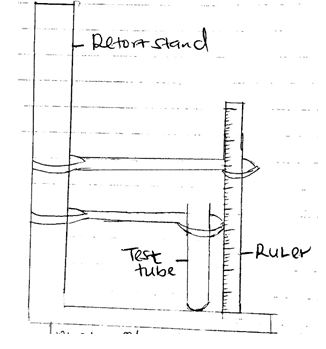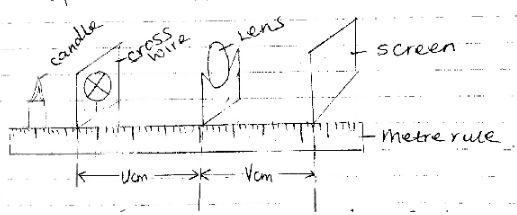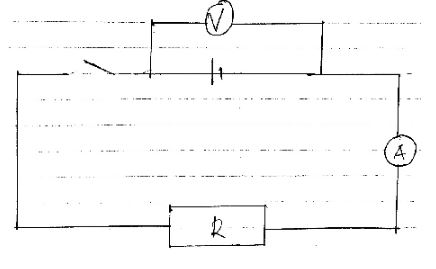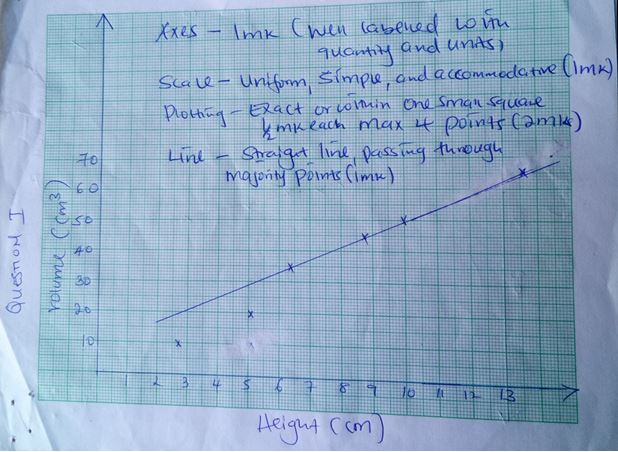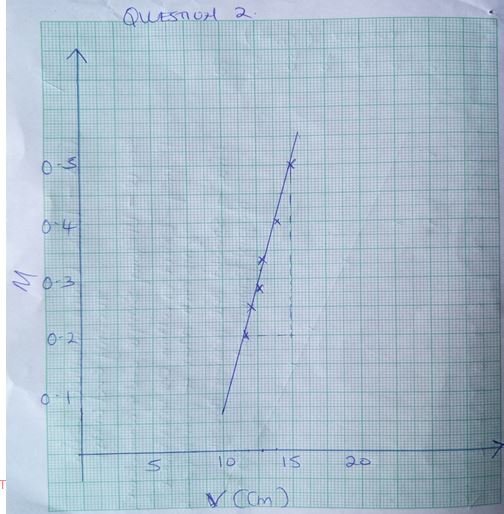PHYSICS
PAPER 3:PRACTICALS
INSTRUCTIONS TO CANDIDATES
- This paper consist of two questions and Answer ALL questions in the spaces provided
- All workings MUST be clearly shown.
QUESTION 1
PART A
You are provided with the following
- Water in a beaker
- Complete retort stand
- Two clamps
- 100ml measuring cylinder
- Boiling tube
- Cotton thread
- Meter rule
- Beam balance(can be shared)
- Vernier calipers (can be shared
Proceed as follows
-
- Using the vernier calipers, measure the internal diameter of the boiling tube D=…………………………………………. (1mk)
- Measure the length H, of the boiling tube
H=…………………………………….cm (1mk)
- Measure the mass of the boiling tube using the beam balance M=…………………………………….g (1mk)
- Clamp the boiling tube vertically with its base resting on a flat surface as shown, Use the second clamp to clamp the meter rule beside the boiling tube.
- Measure 10ml of water and pour into the boiling tube. Measure the height h, of the water. Keep adding water in small amounts in the boiling tube and complete the table below
(3MKS)Volume in cm3/ml Height H(cm) 10 20 35 45 50 65 - On the grid provided, plot a graph of volume V(cm3) of water (y-axis) against height h(cm) (5mks)
- From the graph determine the slope, (3mks)
- Wind the cotton thread ten times round the boiling tube, pushing the windings very close together, the turns should not overlap on each other.
Unwind the thread and measure the length L of the thread.
L……………………….(cm) (1mk) - Calculate the volume V,of the glass material which the boiling tube is made of, given that
V=h⌈2L22500-5⌉
V= ………………………………………. (2mks) - Calculate the density d, of the glass material of the boiling tube d=…………………………................... (2mks)
QUESTION 2
PART A
You are provided with the following
- A meter rule
- Convex lens
- A candle
- Len’s holder
- Cross wither mounted on a cardboard
- A white screen
Proceed as follows:-
- Set up the apparatus as shown
- Starting with U=30cm vary the position of the screen S until a sharp image of the cross wire is observed on the screen. Measure and record the value of the image distance V.
- Repeat the experiment above for other values of U, and complete the table below(6mks)
U(cm) 30 35 40 45 50 55 V(cm) M=V/U - Plot a graph of M against V (5mks)
- Determine the slope of the graph (3mk)
- The equation of the graph is given by M= vf-1 . Use your graph to obtain the value of f (2mks)
PART B
You are provided with the following apparatus:
- One cell and a cell holder
- Six connecting wires, two with crocodile clips
- A switch
- A 10 carbon resistor labledded R
- An Ammeter
- A voltmeter
Proceed as follows
- Set up the apparatus as shown below.
Record the reading E of the voltmeter E…………………………………….. volts (1mk) - Close the switch and record the reading, V, of the voltmeter and I the reading of the ammeter
V= ………………………………..volts (1mk
I= ……………………….amperes (1mk) - Given that E = v + V + 1r, determine the value of r
r………………………………….. volts (2mks)
CONFIDENTIAL
QUESTION 1
- Complete retort stand with two clampsSome water in a beaker (100m2)
- 100ml measuring cylinder
- Boiling tube
- Cotton thread (100cm)
- Meter rule
- Beam balance (can be shared)
- Vermier calipers (can be shared)
QUESTION 2
- Meter rule
- Convex lens of focal length 10cm
- A candle
- Lens holder
- Cross wire mounted on a cardboard
- A white screen
- One cell
- Cell holder (one cell)
- A switch
- Six connecting wires, at least two with crocodile clips.
- 10Ω carbon resistor (label it R)
- Ammeter
- Volt meter
MARKING SCHEME
QUESTION 1
-
- 2.24cm 0.1
H= - 14.9cm ± 0.1
- 2.24cm 0.1
- 24.7g ±1
Each ½mk total 3mks (3mks) -
Volume in cm3/ml Height H(cm) 10 2.7 20 5.1 35 6.4 45 8.8 50 10.0 65 13.6 - Graph paper
- Gradient = change in y/change in x
= 62-40/13-78 √1
= 22/5.2√1
= 4.231cm2 without unit ½mk - L= 86cm ±1.0
- H 2L²/2500 -5
= 14.9 2×86²/2500 -4.231
= 14.9 14792/2500 -4.231
= 149 5.9168 – 4.231
= 14.9×1.6858
= 25.11842√1mk - Density = mass/volume = 24.7/25.11842
= 0.9833g/cm3
QUESTION 2
PART A
-
U(cm) 30 35 40 45 50 55 V(cm) 15.0 14.0 13.5 12.9 12.5 12.0 1 mark each
Max 5 pointsM=V/U 0.5 0.4 0.3375 1mk all correct - Graph paper :
Axes- well labelled quantity and units (1mk)
Scale – uniform, simple and accommodative (1mk)
Plotting – exact points or to 1small square
½mk each max of 4 (2mks)
Line – should pass through majority of points with positive gradient (1mk) - Slope = change in y/change in x
= 0.5-0.2 √½/15-12√½ = 0.33
1/10
0.1cm-1 - m = v/f - 1
1/f = gradient √1
1/f = 0.1
f = 10cm √1
PART B
- E =1.5V ±0.1 (1mk)
- V = 1.14 ± 0.1v 1mk
I= 0.04A 0.1 (1mk) - E = V + 1V
1.5 = 1.14 + 0.048 r √s1
1.5 – 1.14 = 0.048
0.36 = 0.04r
R = 0.36/0.04 = 9
Download Physics Paper 3 Questions and Answers with Confidential - Kapsabet Pre Mock Exams 2021/2022.
Tap Here to Download for 50/-
Get on WhatsApp for 50/-
Why download?
- ✔ To read offline at any time.
- ✔ To Print at your convenience
- ✔ Share Easily with Friends / Students

